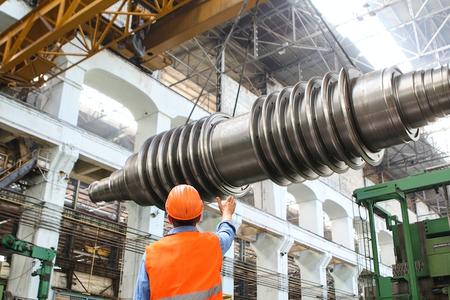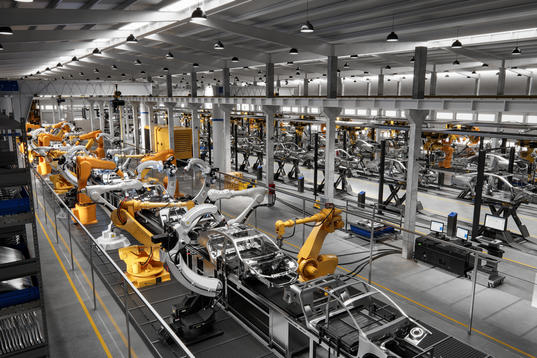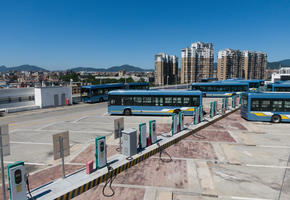Six years. That’s how long we have to halve global carbon emissions to get the world on track to reach net zero by 2050. So, we must address the challenges around materials and sectors where action is needed most.
We need look no further than the materials that surround us in our daily lives: steel and concrete. As the very foundations of our modern society, these materials make up the cars we drive, the buildings we live and work in, and the wind turbines and solar panels powering the energy transition.
Steel accounts for a staggering 7% of global greenhouse gas emissions – that's nearly four times that of the aviation industry. And concrete? That accounts for some 8% of global carbon emissions. We must be unapologetically impatient in driving action to decarbonize the production of these critical materials, because these numbers are currently only projected to rise with increasing demand.
The United States’ potential to lead
The US is the world’s fourth largest steelmaker and a global leader in secondary (recycled) steel production. It’s also home to many innovations and disruptions of the concrete sector from organizations such as Carbon Built, Electrified Thermal, Brimstone, and Seamix.
The Inflation Reduction Act and various state-level Buy Clean Initiatives have allowed for unprecedented potential to unleash industrial decarbonization. As technologies critical to the transition such as green hydrogen continue to mature, we must ensure the public investment and support for research and development is secured. Scaling up these technologies is pivotal to providing the infrastructure needed to power the net zero transition.
Public-private partnerships will allow key private players to de-risk the investment into these technologies, with the development of green hydrogen DRI-Electric Arc Furnace (EAF) steel facilities. We’ve begun to see examples of such collaboration with the Midwest Alliance for Clean Hydrogen which is pooling public and private entities and was awarded up to $1bn USD in funding under the Infrastructure Law to develop a regional clean-hydrogen hub.
Bringing these pathways to a sustainable Technology Readiness Level will allow initiatives such as Buy Clean to thrive and steelmakers to have the confidence to commit to decarbonization.
The US can and must play a unique role in the industrial decarbonization movement.

Matching ambition
It’s time for more US-based businesses to play their part by strengthening the demand signal toward producing and using low-emission industrial materials and demanding responsibly produced industrial materials.
Governments can match the ambition shown by leading corporates in setting ambitious and credible green (public) procurement principles and regulations. By doing so, they can drive the decarbonization agenda, set a clear direction of travel, and make steel and concrete not so hard-to-abate' industries.
However, collaboration between our governments at all levels and private businesses will be paramount in driving and scaling meaningful change. The benefits for both parties for collaborating on industrial decarbonization are clear:
- Faster progress in achieving shared goals by pooling their resources, expertise, and influence.
- Fosters innovation and research in technology, processes, and policies related to decarbonization.
- Reduces the risks associated by being able to better navigate regulatory uncertainties and market fluctuations.
- Reduces the financial burden on taxpayers and businesses alike, by optimizing investments in decarbonization projects.
- New market opportunities for businesses by aligning government policies and regulations with sustainable business practices.
- Enhances the reputation and trustworthiness of both businesses and governments in the eyes of stakeholders, including customers, investors, and the public.
- Can stimulate economic growth and creates job opportunities in industries such as renewable energy, energy efficiency, and sustainable infrastructure.
At Climate Group, we’re harnessing the power of the private sector through our SteelZero and ConcreteZero programs focused on industrial decarbonization, while working with the government through our Under2 initiative. Climate change is a global crisis, that needs all-hands-on-deck.
Leadership knows no bounds
By extending public-private partnerships beyond state lines and even domestic borders, the US can foster cooperation to address global challenges. Including overcoming technical barriers, scaling up low-emission industrial production and driving down costs. But we must do this while accounting for those impacted along the way, ensuring a just transition.
The US will need to work to decarbonize all (including primary) steelmaking production pathways and advocate for data transparency in all parts of the steel and concrete supply chains. By also supporting the harmonization of low-emission steel and concrete standards both globally and within public procurement principles, and sharing best practices, the US can collectively advance the use of net zero steel and concrete worldwide.
The US Climate Action Summit: Seizing the opportunity
Which is why at the US Climate Action Summit in Washington DC on April 22-28, industrial decarbonization and how the US can become a green industrial powerhouse on the back of the historic opportunities provided by the Inflation Reduction Act, will be high on the agenda.
The summit offers the chance to bring together leading steel and concrete producers, buyers, policymakers, investors, and NGOs to move beyond rhetoric, with a platform for genuine action. With the power of public-private partnerships, scaling the technologies which will enable industrial decarbonization, aligning data transparency and low-emission product standards, we can forge a bright future for green steel and concrete in the US.
Through strategic partnerships, forward-thinking policies, and responsible innovation, we will get there. We will Make it Real.



